
|   |

|   |
Rekhayanam: The women in the world of Namboodiri - Padma Jayaraj e-mail: padmajayaraj@gmail.com December 10, 2022 Rekhayanam '22, a week long exhibition (Nov 21 to 27, 2022) of the line drawings of artist Namboodiri in Punnayoorkulam Art Gallery by artist Gireesan Bhattathiripad in Punnayoorkulam, Kerala, proved a rare treat.The rare collection of 200 drawings of yester years collected from lost sources point to a golden age of social harmony and cultural hegemony with the stamp of authenticity. The exhibition showcased the line drawings by Namboodiri - of the men who mattered in the field of cinema, and of the literary giants of the times. And the innumerable characters of famous novels featured in mainstream publications, whose identity is not relevant today, inhabit the world of illustration. That the characters were as real as the authors for the reading public of the times may surprise today's readers. Popularly known as Namboodiri, the doyen of the world of illustration based in Kerala, is a product of the Government College of Fine Arts, Madras. In 1954, after his training in Cholamandal Artist's Village under K.C.S. Panikker, he returned home to join Mathrubhumi Weekly as a staff artist. Those were the times when the weekly serialized the novels of literary giants like Thakazhi Sivasankaran Pillai, Kesava Dev, M.T. Vasudevan Nair, Urub, V.K.N, S.K. Pottekkatt, with illustrations of Namboodiri that fired the imagination of the readers. Again, it was in Mathrubhumi Weekly, that Namboodiri, the 'Emperor of line drawing', started the first of his pocket carton series, Naniyammayum Lokavum, the world view of the women folk that won popularity. It was the times when only the print media flourished, stimulating the imagination of readers. And Namboodiri became famous for his line drawings. His illustrations were such that his sketches breathed life into the characters. They thrilled the readers and lived in their memory. 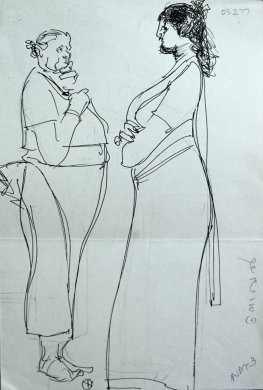
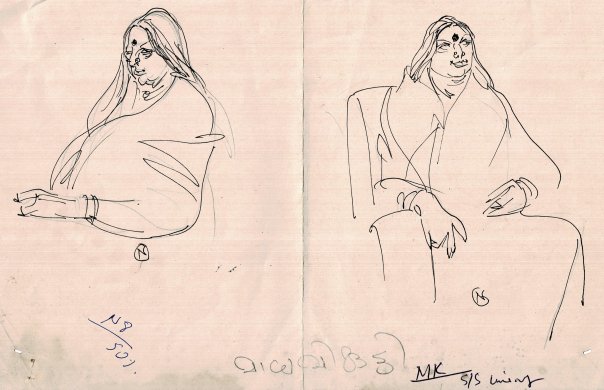
The women of Namboodiri's creations were a class apart. They had the stamp of Kerala as much as the Ravi Varma paintings carried the imprint of Indian womanhood. Keralites relished as Namboodiri breathed life into the characters of the greatest novels of the times. Later, critical studies of his line drawings for popular works became part of literary studies in Malayalam. The very name Namboodiri remains etched in as a signature in the heart of generations who enjoyed reading as their only past time. Today his sketches remain scattered in some books in the libraries; many remain alive in the virtual world, like the uprooted population of a bygone period. I gazed and gazed at the drawings that brought memories of my childhood in a rural community on the bank of river Neela when reading was the only activity, for electricity and the radio was yet to reach. Now, here they are, a missing piece of my cherished childhood, the characters of literary works, who represent a vanished era. A group of school kids brought by their teacher woke me up. The wide-eyed kids who stood mesmerized in front of the sketches will surely need a briefing on the social history of a lost era, the life that their grandparents lived. Giving space to the crowing kids, I sat aside remembering my youth and the books that lighted my world in my grandmother's home. I got up and went in search of those women who still remain etched in my memory. I could not find them. But other women who reminded me of those days came alive from a prismatic angle with many dimensions. I moved from sketch to sketch to see those that set ablaze my inquisitiveness. 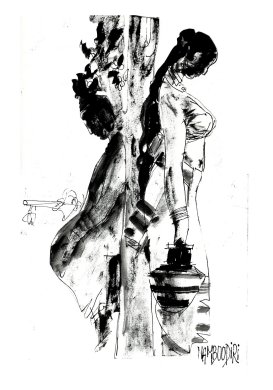
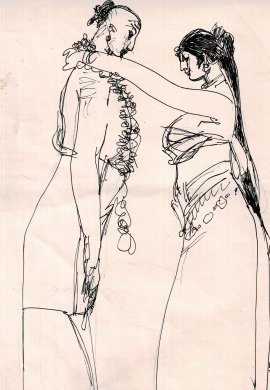
Love, the divine dimension of the noblest feeling in the human heart, is the first illustration that introduced the theme of women in the exhibition. Curated in a manner that considers art divine, the persona of the woman is cast integral to man. This divine dimension is hinted at in the first drawing of Radha-Krishna as part of a tree trunk. It is different from the ardhanareeswara concept familiar to Indian imagination. Radha and Krishna, the male and the female principles, the archetypal lovers of eternal romance embedded in the Tree of Life reminds of the Greek myth of the male and the female principles inseparable as an egg-shaped entity. The narrative of Namboodiri brings alive the sacred in human relationship. So, abject misery is absent here. The characters belong to the cultural mileu of the middle and upper class who live their life beyond poverty, for whom life has richer dimensions other than mere existence. Here, marriage is a partnership of acceptance, where both man and woman learn to live, more of a sacrament. 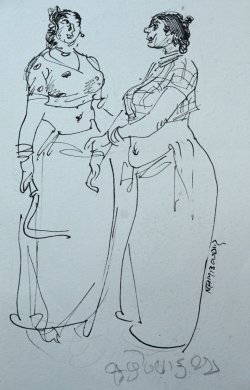
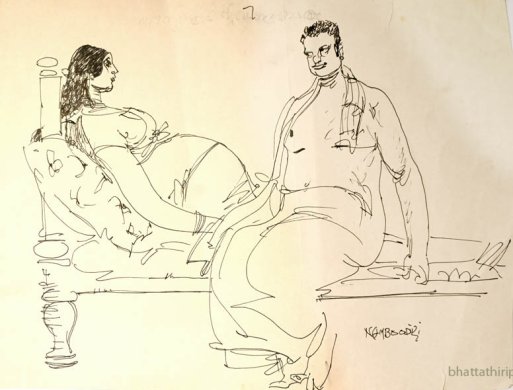
Parenthood is a revelation, paradoxical, as in Nasthikante vilambaram (The proclamation of an atheist). The artist is pointing to the inscrutability of life for the godless in Kerala. The title contains the quirk that is characteristic of a loftier sense of humor.The mystery of life throbbing within the womb of his wife questions the philosophy of existence in the husband. Women, here, both young and old who lived their life in the interiors of homes have a different, yet shared life. The rhythm of the day punctuated by the ritualistic life in a rural ambience flowed like the waters of rivulets in rural Kerala until recently. True, today they represent the social history of a past era: the life that mirrored in the writings of the times, especially novels that featured the social life of Kerala in the 50s, 60s of the 20th century for whom Namboodiri did line drawings for the serial publications in the weeklies. “Line drawings have their own rhythm and elegance. They are dynamic; they embody the telling of tales. When I draw lines it has a literary context, but also a historical flavor. When I created line drawings for characters in stories I was going beyond mere illustration. I was giving life to an expression born out of cultural and human emotions.” 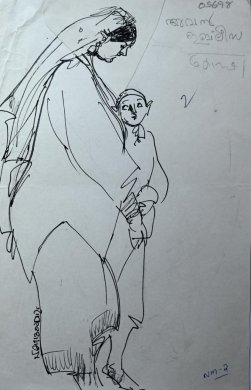
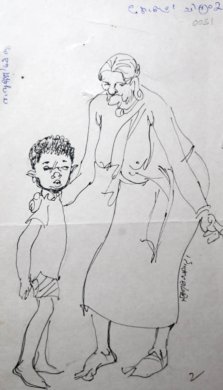 Kamala Surayya, the writer who hailed from Kerala was born and grew up in this region as much as Namboodiri who still lives here. The friendship between the two has brought out many memorable line drawings of the controversial writer. Drenched in admiration and in genuine, compassionate understanding, we see a genius paying tribute to a fellow soul. In the exhibition hall, although rooted out of context, draped in village costume unfamiliar to the school kids around, the figures recreate a lost world. The collection displayed includes the illustrations of Indian women from other states too. The dress, the posture, etc., reveals the x-ray eyes of the artist in understanding the femine ethos in its cultural mileu. 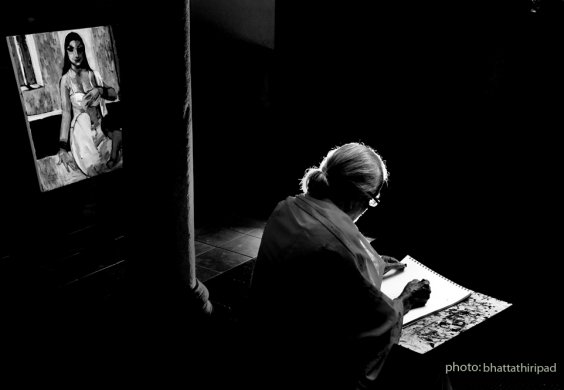
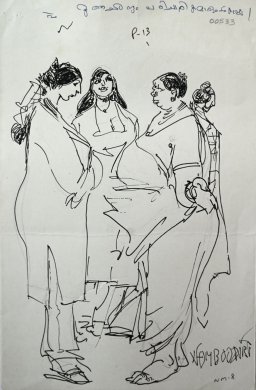  Padma Jayaraj is a freelance writer on the arts. |